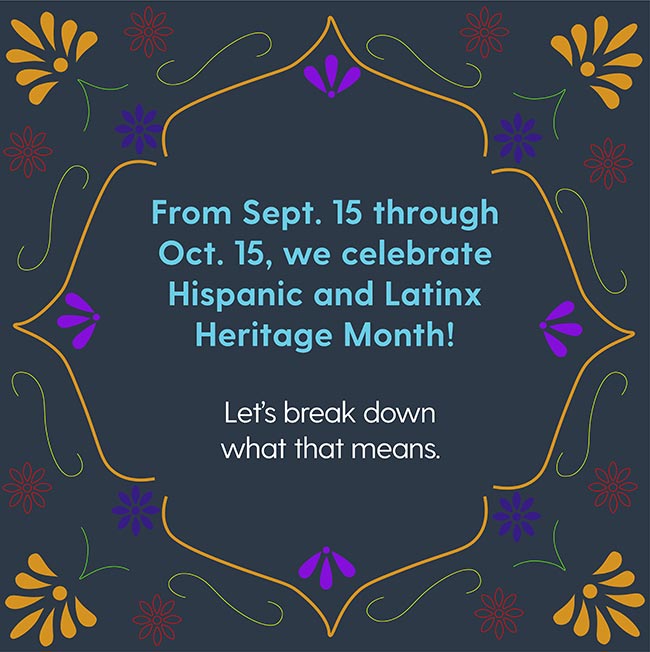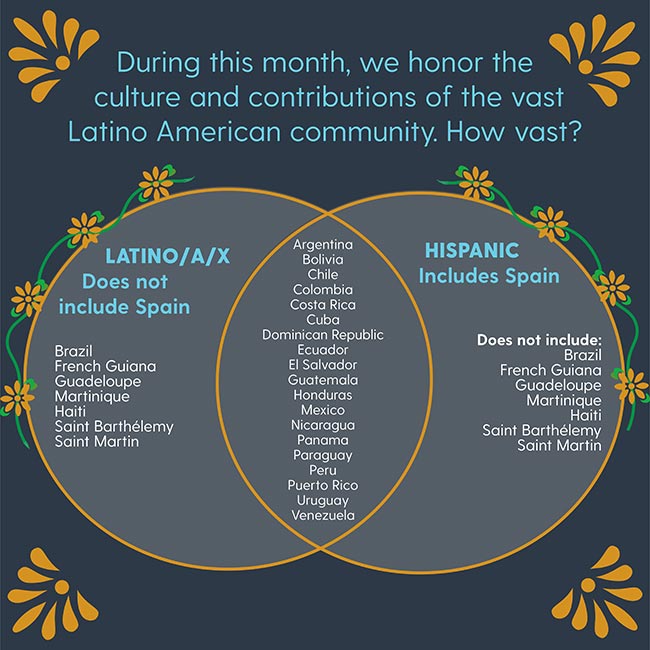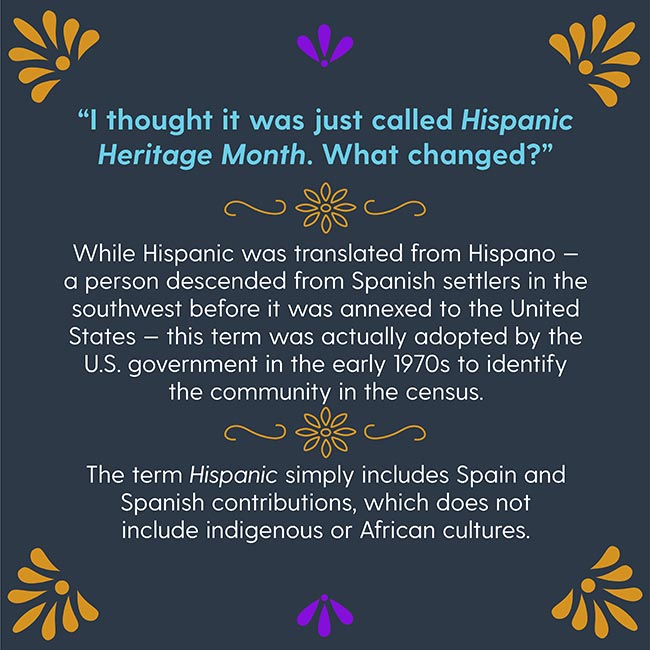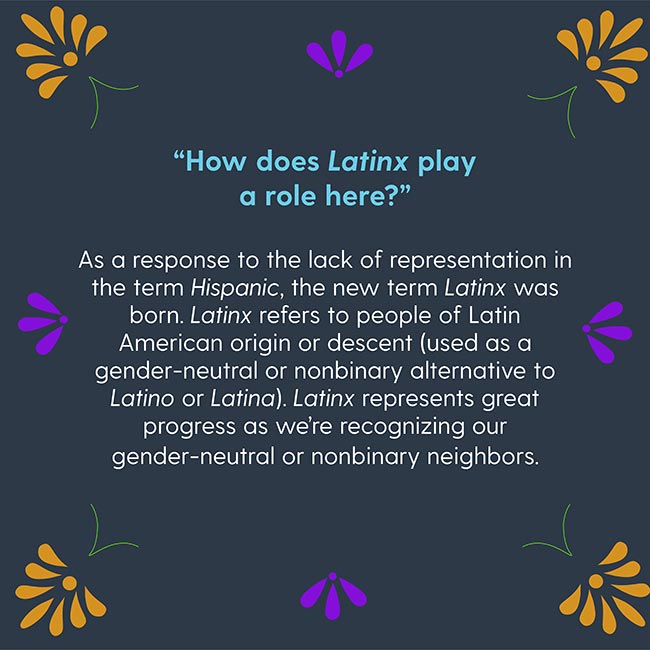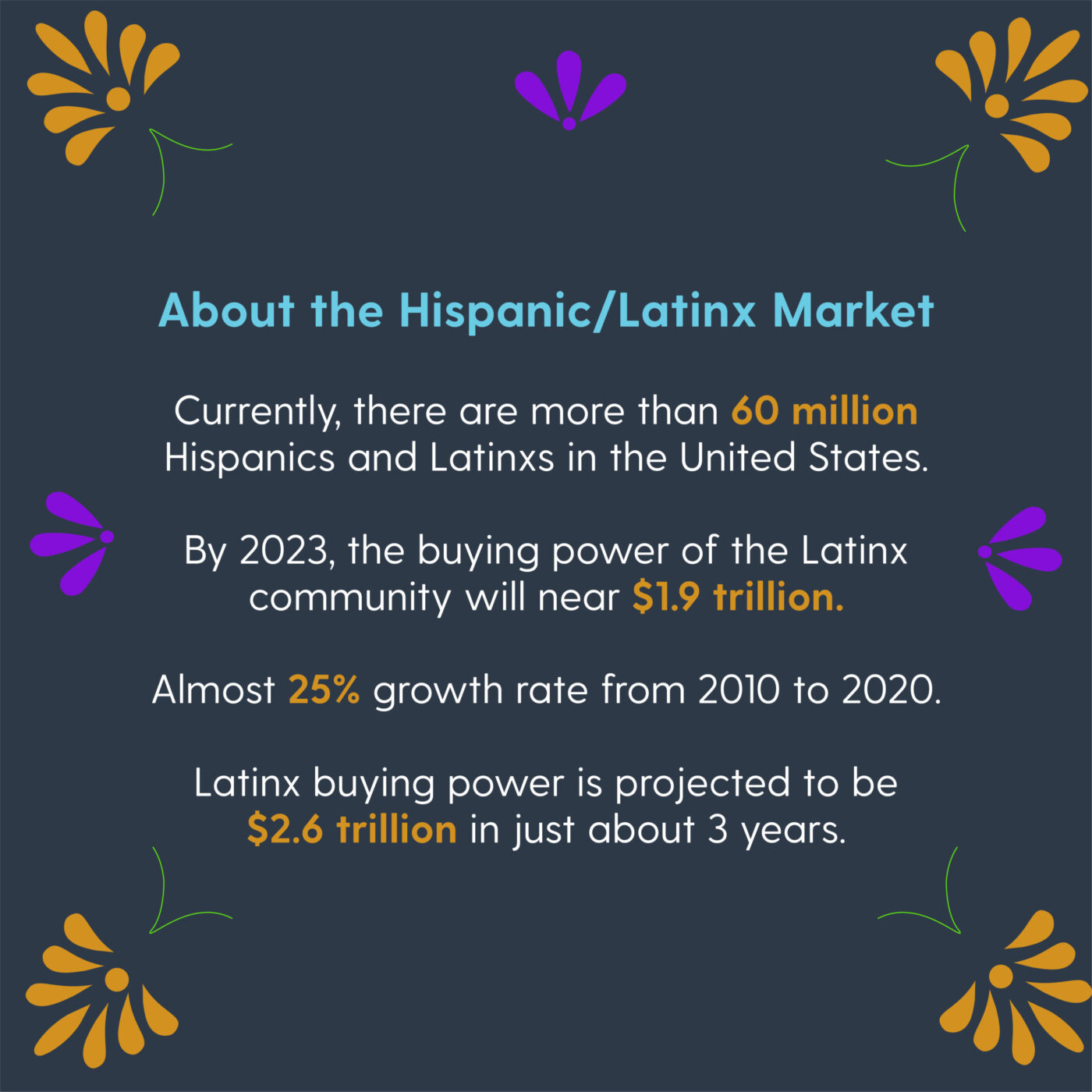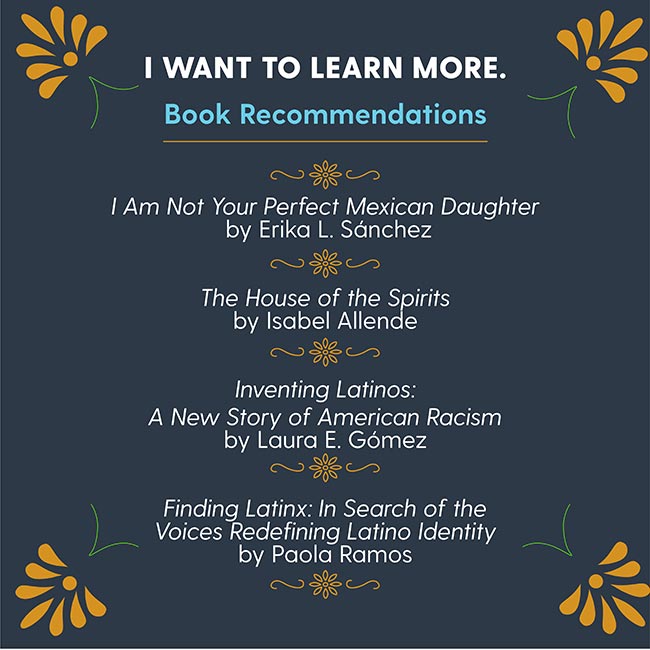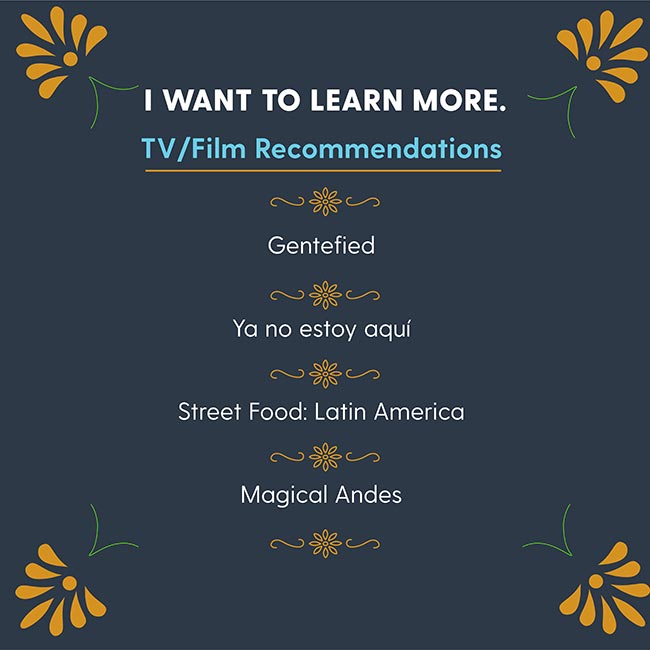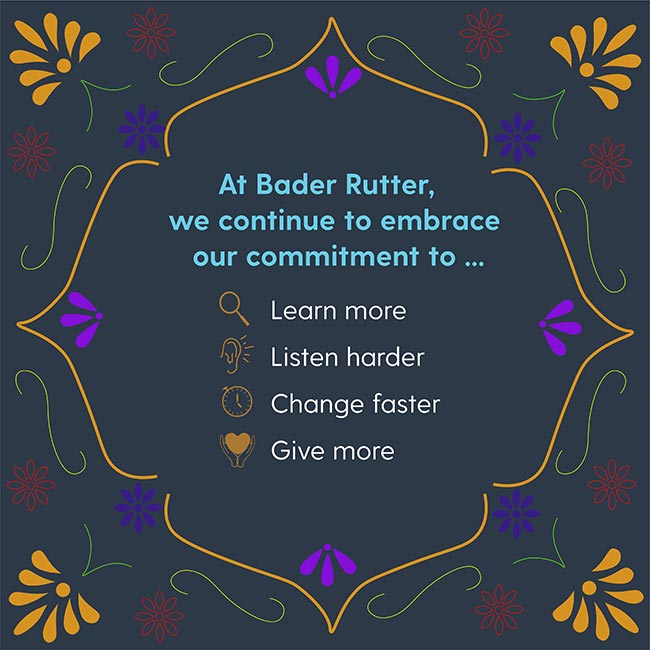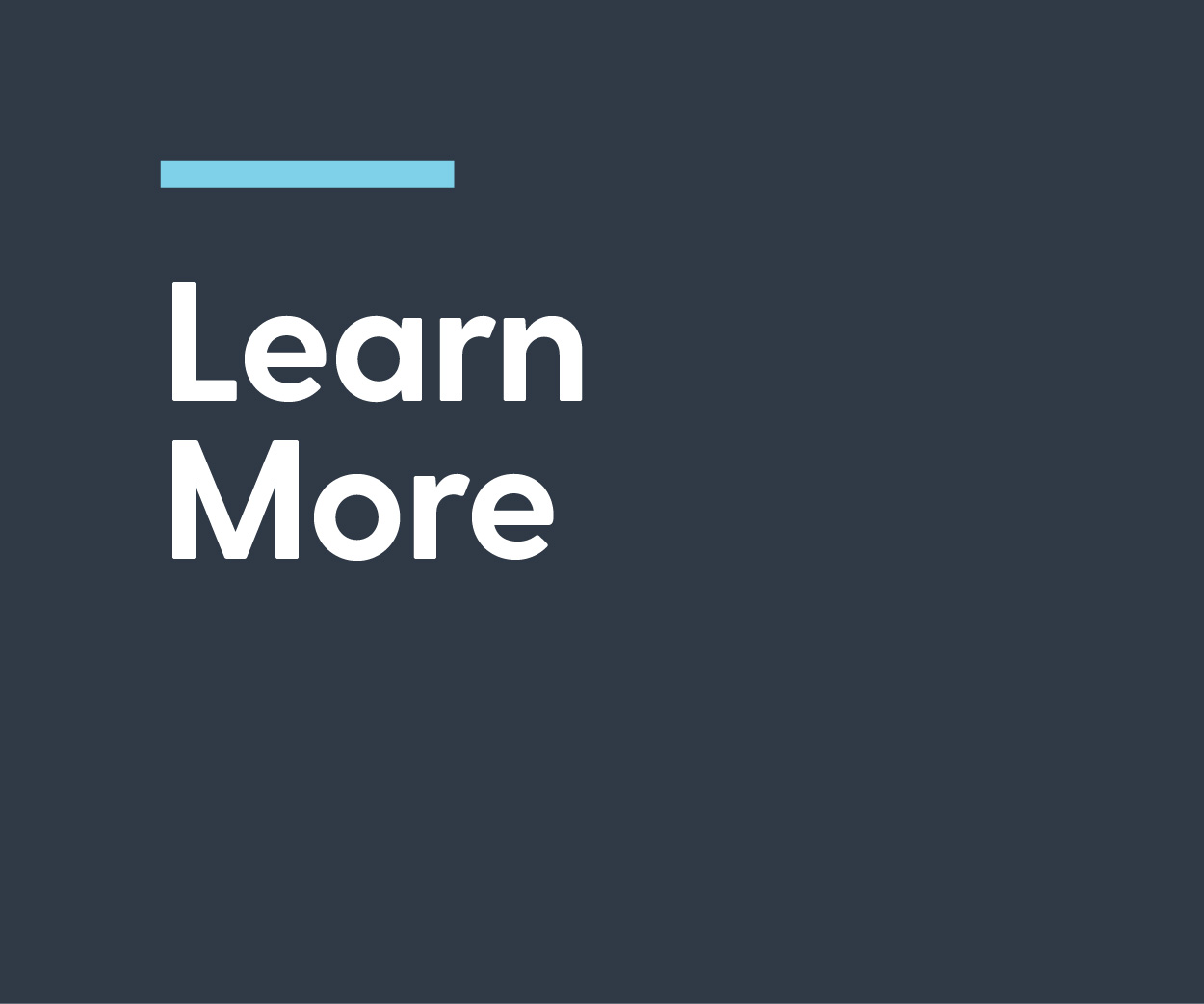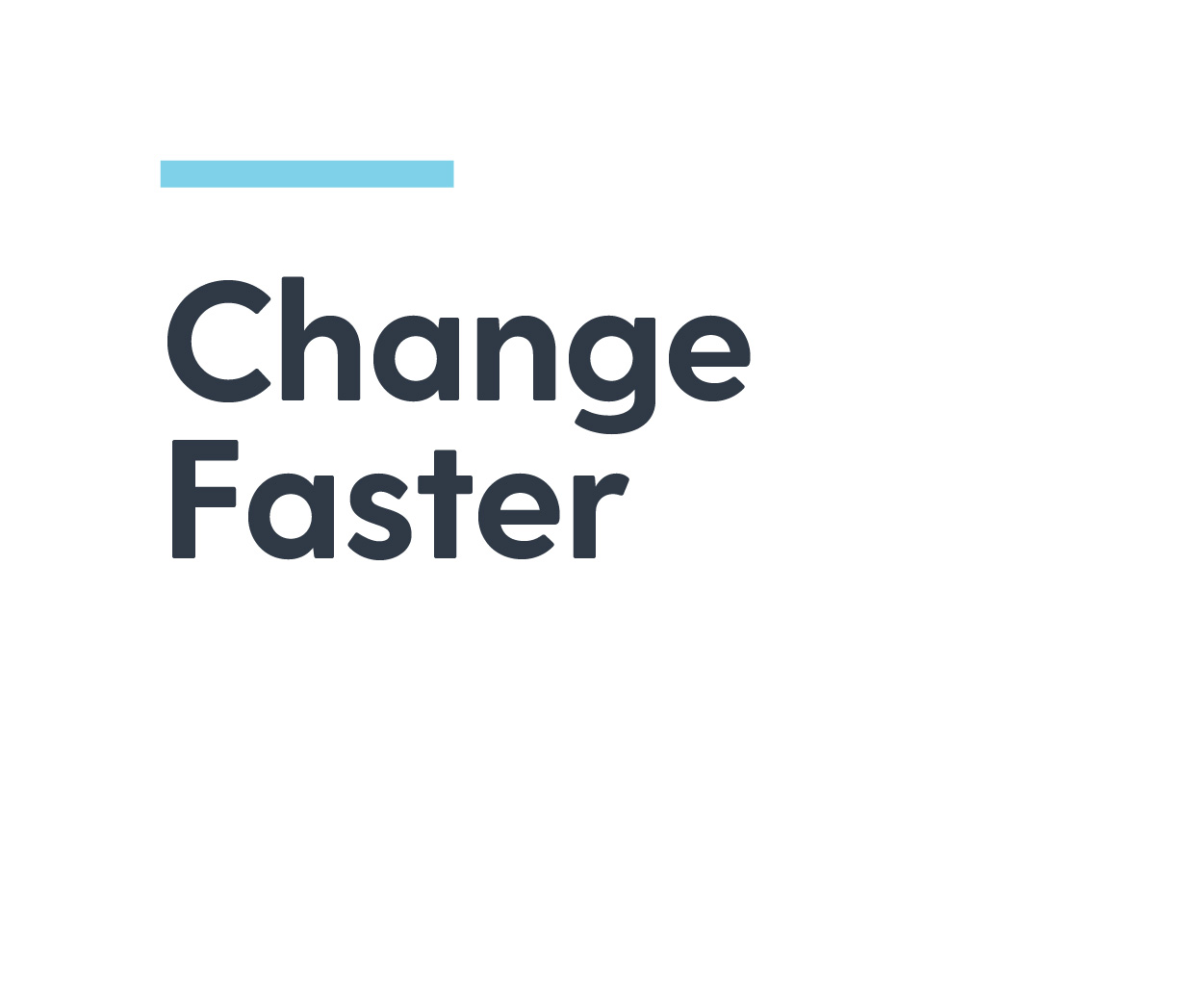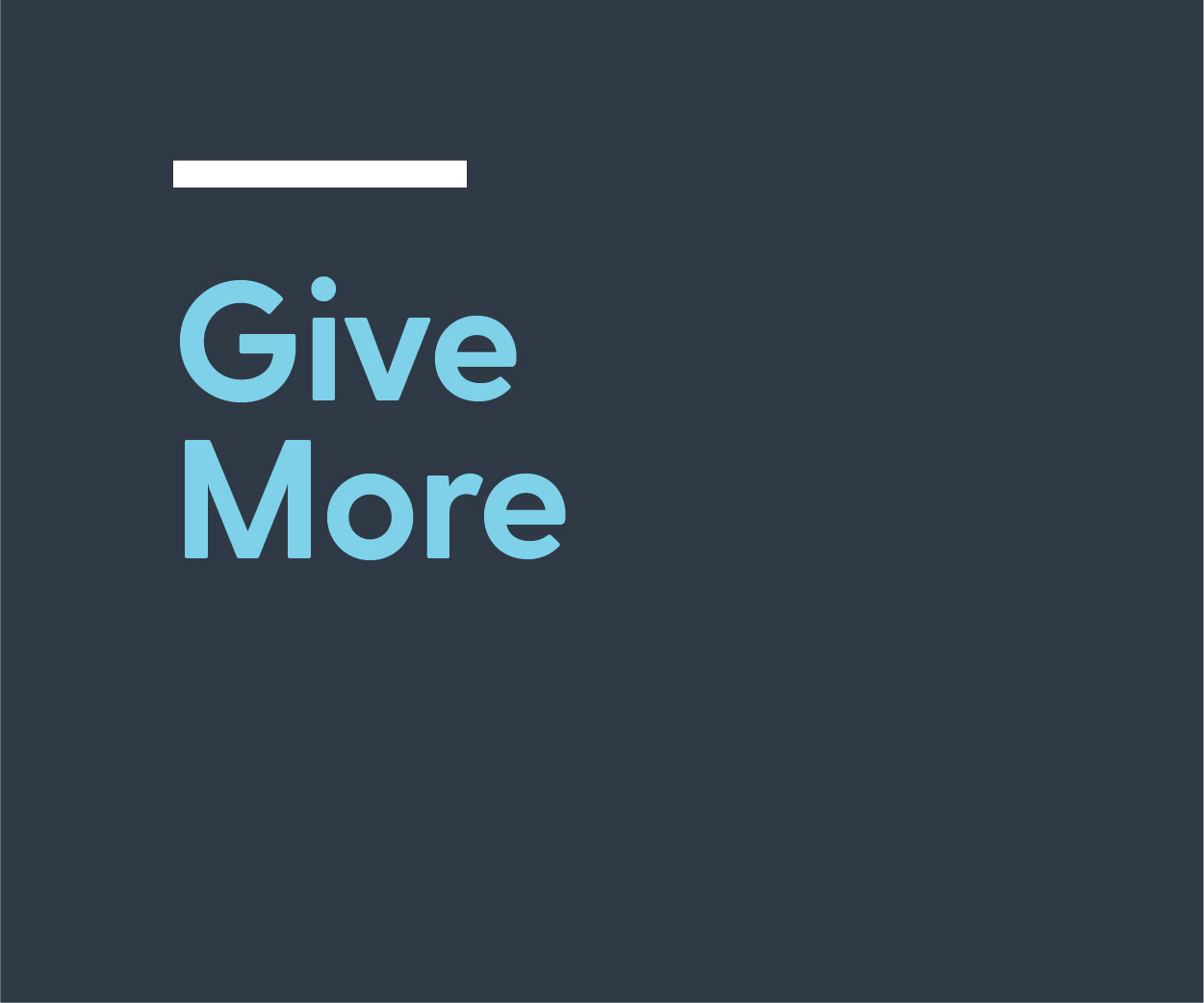The D&I Digest: October 2021
Featured in this issue: Hispanic Heritage Month, National Bullying Prevention Month, Filipino American History Month and LGBTQ+ History Month.
BR is committed to increasing and retaining diversity of thought, experience and background of our talent base at every level and function, and to actively creating a culture of belonging that embraces all of our employees as they are – because if we’re going to fully serve our clients, we need to show up as our full selves. Our goal is to develop a cross-functional team of employees and agency leaders that celebrates our people, delights our clients, better solves problems, and promotes a passion for diversity and inclusion.
Celebrating Hispanic Heritage
In pursuit of our D&I pillar to “learn more,” we partnered with local Latinx artist @erbrambila28 to create this infographic detailing the history behind Hispanic Heritage Month.
Scroll to learn more about this important month.
Celebrating Heritage
Local artist, @erbrambila28, wanted to bring some of her research on other countries’ traditional wardrobes into her design. During this month, many Latin Americans are celebrating their heritage or country’s independence day, so it is customary for people to dress in native garments.
Left to right: Chile, El Salvador, Cuba, Peru
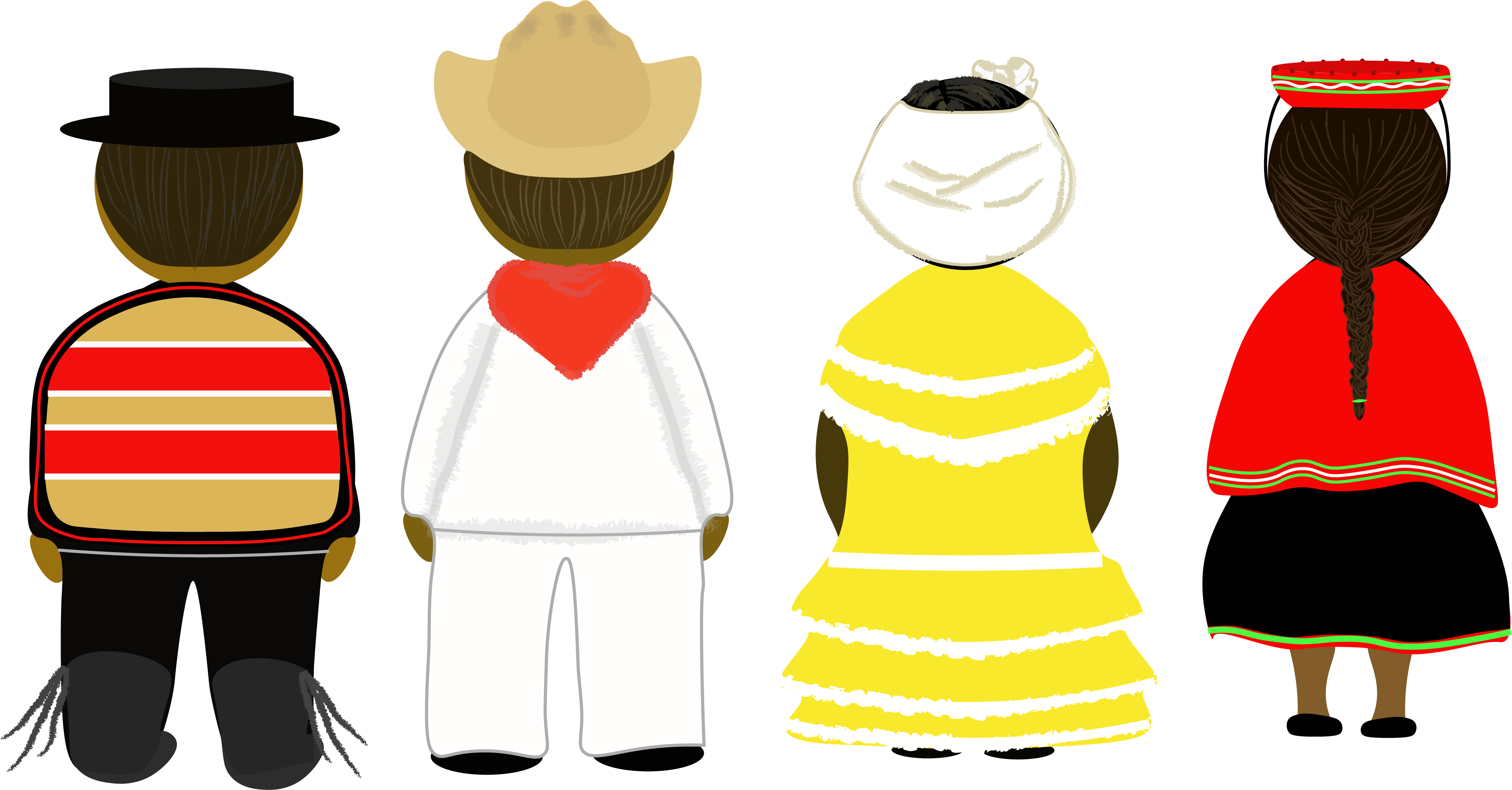
National Bullying Prevention Month
We may have become familiar with bullying in school, either as a child or a parent. However, bullying doesn’t stop when we graduate, and National Bullying Prevention Month, started in 2006 and held during October, aims to unite communities in educating and raising awareness of bullying prevention.
Workplace bullying impacts 54 million Americans every year. This is important because bullying prevention truly begins at home (where we all seem to be spending a lot of our time working and schooling lately). Bullying also doesn’t end there, as cyberbullying is a very real problem in these times of “virtual” everything.
Your D&I team invites you to take steps to educate yourself and your family about what bullying is and how to prevent it in your community. Check out the D&I SharePoint for some bullying prevention resources as well as this video.
Bullying is something that affects us all at some point in our lives, but we know it’s preventable if we work together to raise awareness and become more informed.
Learning the Language: A Recap on Being Conscious and Inclusive
Volunteer Contributor: Michaella Hader
“Words are powerful,” and as marketers, we know this well. They can uplift, inspire and change the way people think or act, but they also can invalidate, marginalize and erase. With this potential to have such negative effects, Crystal Shelley — editor, authenticity reader and owner of Rabbit with a Red Pen — guides us through how to use our words for good, in our lives and our work.
This can be hard to learn. Mistakes are part of the process, and discomfort is normal. What’s easy, though, is getting started. All it takes is a commitment to doing better — seeking to recognize harm before it happens. The small changes we begin to practice and implement over time ultimately lead to a more inclusive, safe and collaborative environment.
At its core, conscious language is rooted in critical thinking and compassion. What it’s not, as Shelley pointed out, is political, censoring or withholding. Conscious language adds a dynamic to conversation versus taking something away. Used skillfully, specific contexts can ensure the impact is positive. Please remember, intent and impact are often not equal.
How to get started.
Most won’t notice the absence of harmful language, but all will notice its use.
Is what’s being said leaving out people of certain backgrounds, genders or abilities?
By being respectful and accurate, we show compassion and empower those around us. Below are some common words and phrases alongside their inclusive alternatives:
- Mankind, “Hey, guys,” or Mom and Dad. These can be seen as exclusionary, as English is gendered. Instead, try: humankind, “Hey, folks,” or parent, adult and grownup.
- Powwow. Used as a synonym for meeting or discussion, this can be seen as disrespectful to Indigenous Americans, as it appropriates a word with significant cultural importance. Instead, try: get-together, quick connect or touch base.
- “That’s crazy.” The term “crazy” is stigmatizing and can reinforce negative stereotypes around mental health. Instead, try: wild, confusing, unpredictable or out of control.
- “He’s wheelchair-bound.” This adjective is inaccurate because it insinuates that those in wheelchairs are physically tied to them when they are not. Instead, try the phrase: “[Pronoun] uses a wheelchair.”
On the journey to becoming more conscious and inclusive, one thing is certain: It takes work to recognize our language and find alternatives, but it is possible. At its worst, language creates toxic environments, unsafe spaces, poor publicity and lost contracts. But at its best, it validates, includes and respects all those around us, helping positively shape lives and workplace culture.
To learn more about Crystal and available resources on conscious and inclusive language, visit her website, watch the BR recorded session or check out this PDF.
Filipino American History Month
Volunteer Contributor: Angela Duckart
This October, the United States celebrates the second-largest Asian American group in this country with Filipino American History Month.
Filipino Americans have played substantial roles in the American labor movement and social justice movements in the United States, from the United Farm Workers movement and the American Indian Movement to civil rights, voting rights and Black Lives Matter. As such, Filipino American History Month honors the history, accomplishments and legacy of Filipinos in this country.
The Filipino American National Historical Society (FANHS) announced its 2021 theme as: “50 Years Since the First Young Filipino People’s Far West Convention.” Hailed as the beginning of the Filipino American Movement, this theme honors the pioneers — as well as the subsequent groups of young people across the nation who have championed for social justice issues affecting Filipino Americans (and other historically marginalized groups) for the past 50 years. Click here if you are interested in learning more about the Filipino American Movement and October 2021 theme.
In October 1992, the founder and board of trustees of FANHS proposed the first annual Filipino American History Month. FANHS wanted to celebrate the arrival of Filipinos in the continental United States and how they have thrived from coast to coast, including growing to comprise the third-largest ethnic group in California.
LGBTQ+ History Month
Volunteer Contributor: Amber Williams
LGBTQ+ History Month is a month-long celebration that occurs in October to observe lesbian, gay, bisexual, transgender and queer history. It also honors the history of gay rights. LGBTQ+ History Month was first celebrated in the United States in 1994, centered around National Coming Out Day, which occurs annually on Oct. 11. This celebratory month was originally known as Lesbian and Gay History Month, and additional identity acronyms were added over time to increase inclusivity of LGBTQ+ communities.
Source: https://multicultural.uiowa.edu/celebrations/lgbtq-history-month
LGBTQ+ History Month helps build community, provide role models and mentors, and recognize national and international contributions. In October and beyond, Milwaukee offers many resources to build upon what’s celebrated and further develop the lesbian, gay, bisexual, and transgender community. Some of these enriching opportunities, programs and upcoming events are featured below.
Milwaukee LGBT Community Center offerings:
50-and-better Adult Programs
Monthly social groups
Intergenerational chat nights
Once-a-month coffee gathering
MCDA monthly meals
Mt. Carmel dinner monthly meals
Healthy aging programs
Outreach activities through training, education and advocacy
50 & Better Dining Club
50+ support group
Transgender Services and Programs
Legal name change workshop
Name change clinic — guidance and support through the legal name change process
TGNC family socials
Appropriate letter forms for treatment, etc.
Workshops and training
Counseling and support for gender-identity issues
Advocacy with medical providers and others: They can communicate with doctors’ offices, clinics and insurance providers on someone’s behalf to advocate for services, correct treatment, appropriate letter forms for treatment, etc.
Project Q/Youth Programs
Workforce/job skills development
Leadership and life skills activities
Expression/arts-based activities
Alcohol, tobacco and other drug-risk reduction activities
Safer sex and healthy relationship education
Health and wellness program
Events: GSA Summit, drag shows, Pride Prom and more
AODA (Alcohol and Other Drug Abuse) Services
Recovery Coaching
LGBTQ + Re-entry program
Circles of Recovery (AODA) anonymous meeting
Circles of Reflection (AODA) support group
Updates:
Also happening in October:
National Disability Employment Awareness Month
Oct. 10 – World Mental Health Day
Oct. 11 – National Coming Out Day (LGBTQIAA+)
Oct. 19 – Eid Milad un Nabi (Muslim)
Oct. 20 – Sikh Holy Day (Birth of the Guru Granth)
Missed our last newsletter?
Moving forward, D&I will release a bi-monthly newsletter, but the previous issues are always available for you. Check out the previous issue here:
Want to help the D&I Leadership Council? Have an idea on something that should be highlighted next month? Send us a note.
Dig in further on our SharePoint site that highlights our four pillars.
Learn More: BR supports each employee’s process of self-discovery about topics related to diversity, inclusion and belonging. We do this by providing resources and opportunities for employees to educate themselves.
Listen Harder: BR leadership commits to listening to employees about topics related to diversity, inclusion and belonging, and encourages employees to have open and honest conversations with each other. We do this by providing a range of feedback channels and spaces for discussion.
Change Faster: BR executes on action plans to become a more diverse and inclusive organization that fosters a sense of belonging. We do this by providing training for our employees, implementing talent acquisition plans and tracking our progress.
Give More: BR gives of its resources to support diversity, inclusion and belonging, and encourages employees to do the same. We do this by offering our employees service days, partnering with local organizations on pro bono work and making monetary donations.

